Synthesis of chiral b2-amino acids by asymmetric hydrogenation
Chiral b2-amino acids can be synthesized using their prochiral precursors b-aryl- or b-heteroaryl-a-N- benzyl/N-acetyl/N-Boc substituted a-aminomethylacrylates.
These substrates were obtained using a Baylis-Hillman reaction, followed by acylation and amination. A broad scope of chiral catalysts, especially commercially available phosphorus ligands in combination with the transition-metal rhodium, have been tested for asymmetric hydrogenation.
The results in terms of conversion and enantioselectivity vary significantly according to reaction conditions and/or substrates used.
Applying the optimized reaction conditions, considering factors such as the chiral catalyst, the H2-pressure, the temperature and the solvent used, a quantitative conversion as well as 99% ee were accomplished.
If you wish more information, please refer to our new publication in cooperation with the Leibniz Institute for Catalysis and the University of Rostock in Tetrahedron Vol. 23 – Nr.17/ September 2012.

